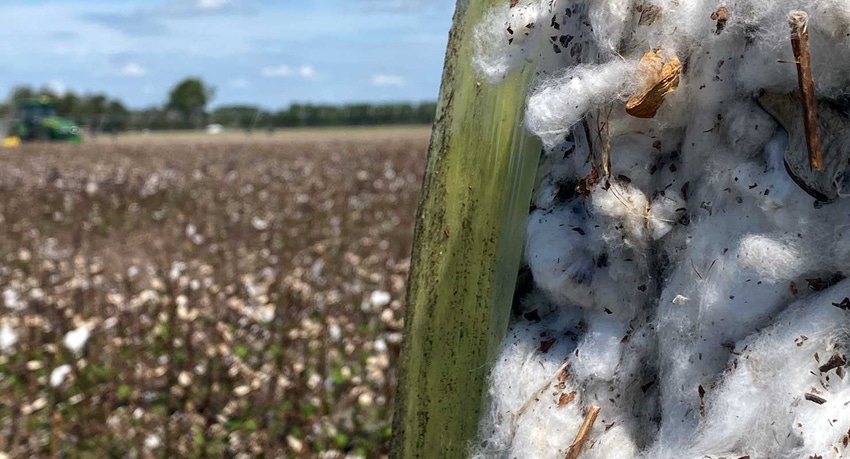January 25, 2022

For its annual crop production report released in mid-January, USDA significantly lowered the 2021 Alabama crop yield.
The initial August projection was 924 lb/A from 405,000 acres, for a total of 780,000 bales. Subsequent reports held the estimates at 906 lb/A from 400,000 acres and 755,000 bales. The most recent numbers declined to 846 lb/A, 400,000 acres and 705,000 bales, reflecting the influences of late season rains across much of the state... and some disappointment relating to the belief that in August, we thought we had a much better crop.
My original estimate was more pessimistic than USDA and was even below their final numbers. The state is so diverse it is a challenge to see the whole and gain an accurate assessment of the overall crop status. As stated in previous newsletters, the crop tended to improve as the season progressed, earlier cotton was affected more with hardlock and boll rot than the later crop. Also, yields trended better with distance from the Gulf Coast and southwest Alabama. There were few spectacular fields.
Fiber quality data are surprisingly good. Given the rains of August and September, we had feared a repeat of the Extraneous Matter – Seed Coat Fragment debacle from 2020. It did not happen. Reports from the Classing Offices in Macon, GA, and Memphis, TN, are below. Macon processes about two thirds of our crop and handles more bales than any other Classing Office. Overall quality numbers from Memphis are slightly superior to those from Macon.
Prices remain STRONG. It seems that the first BIG wave of COVID-19 affected world economies, resulting in a negative effect on DEMAND. Prices pushed lower into the 60s. Conversely, as nations thought we were moving back to NORMAL and demand returned, the impact of reduced manufacturing capacity as well as logistical challenges exerted a significant effect on SUPPLY, pushing prices into sustained, seasonal (but not all-time) records. Clearly and regrettably, we are not back to normal, but it is good to have opportunity to sell old (2021) crop at a great price and to contract new (2022) crop at near $1/lb.
Given rising input costs, it seems prudent to price at least a small portion of the expected 2022 production. Of course, buyer beware: These are comments of an agronomist, not a seasoned cotton market economist.
Source: Alabama Cooperative Extension Service, which is solely responsible for the information provided and is wholly owned by the source. Informa Business Media and all its subsidiaries are not responsible for any of the content contained in this information asset.
You May Also Like




